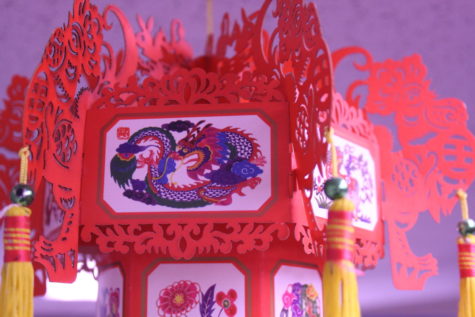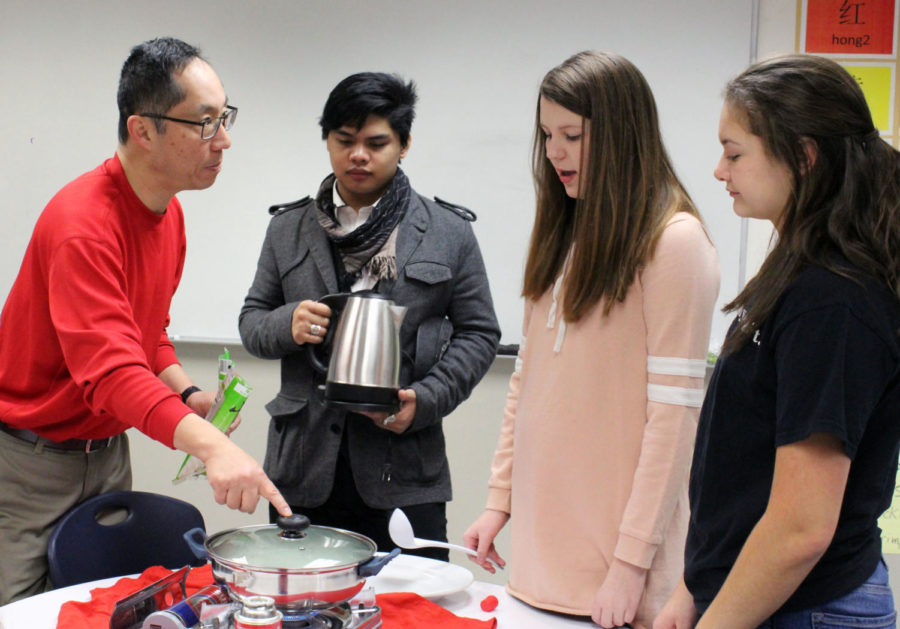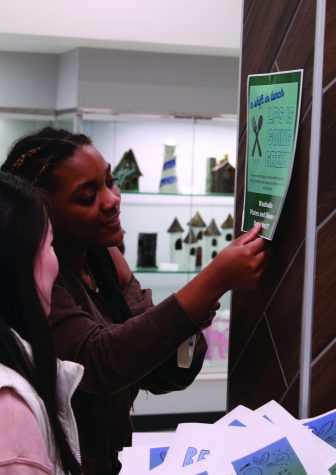Xin Nian Kuai Le
The year to “hog” luck and good fortune.
Amid the plain blue and white sky, green grass, pink cherry blossoms and gray concrete, one color is everywhere in China. One could find this color by looking up, on the lanterns, brightly illuminating the sky. The color red can be found everywhere throughout China from February 5-19, all to celebrate Chinese New Year.
Why all this red? In an ancient legend, the color defeated a Chinese monster who would come to eat the townsfolk once a year.
“One year, the people scared the monster away with firecrackers and by hanging red stuff around their doors,” Chinese teacher Shianguu Hsieh said. “So, every year, people like to do firecrackers and hang up red lanterns to scare away the monster.”
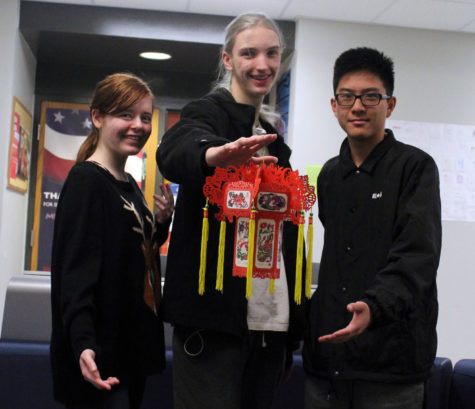
Students in Hsieh’s Chinese classes having been learning about the celebration all this month. They’ve discovered that along with the displays of red decorations, Chinese New Year is celebrated with gift-giving, well-wishing, family reunions and lots of eating. Traditional dishes include dumplings, sticky rice, dates and candies. Some foods symbolize good fortune.
Junior Jason Audoung’s family celebrates this holiday at home.
“Chinese New Year celebrates my ethnicity and Chinese culture,” he said. “It’s also a good way to spend time with my family because it brings us closer together.”
Similar to the American New Year, the Chinese New Year symbolizes fresh starts. Unlike the New Year in America, however, the Chinese New Year focuses on luck.
“This year is the year of the pig and it’s common to think that will be lucky,” junior Izzie Bates said. “Pig sounds like ‘all’ in Chinese. So when they say the pig is lucky, it sounds like they’re saying ‘all’ is lucky.”
The year of the pig, besides symbolizing luck, also represents good fortune.
“Pigs are fat, and back then, only the rich people could afford to be plump. Plumpness is considered to be good fortune in China,” Hsieh said.
One kid-favorite tradition of the New Year is the gift-giving, as they are on the receiving end. Adults prepare a red envelope, called a “hong bao,” filled with money and small gifts.
“On New Year’s Day, the kids will say something well-wishing to the adults,” Hsieh said. “‘Good morning dad,’ ‘happy new year,’ ‘wish you a lucky year,’ something lucky.”
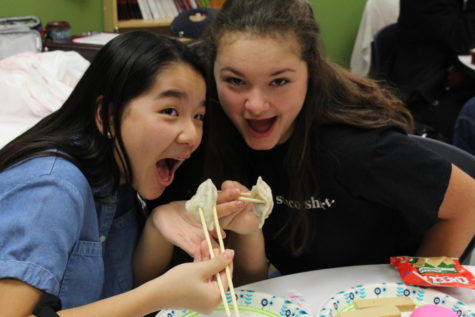
The tradition is for the children to run around the neighborhood collecting more “hong baos” from other adults, similar to Halloween trick-or-treaters. Instead of doing a trick, the children wish them a happy new year.
Close friends and family may get around $100 in their “hong bao,” while children get around $2 to $5.
Sophomore Tyson Jones has traveled to China and enjoys celebrating the New Year with friends.
“Two years ago, when I went to my friend’s house in China, she had two of her friends over who I didn’t know at the time,” he said. “It was one of those situations like, ‘why is there a guy in your house?’ moments. It was really funny at the time. Now I know them.”
Similar to the American New Year, the Chinese New Year symbolizes fresh starts. Unlike the New Year in America, however, the Chinese New Year focuses on luck.
“This year is the year of the pig and it’s common to think that will be lucky,” junior Izzie Bates said. “Pig sounds like ‘all’ in Chinese. So when they say the pig is lucky, it sounds like they’re saying all is lucky.”
The year of the pig, besides symbolizing luck, also represents good fortune.
“Pigs are fat, and back then, only the rich people could afford to be plump. Plumpness is considered to be good fortune in China,” Hsieh said.
